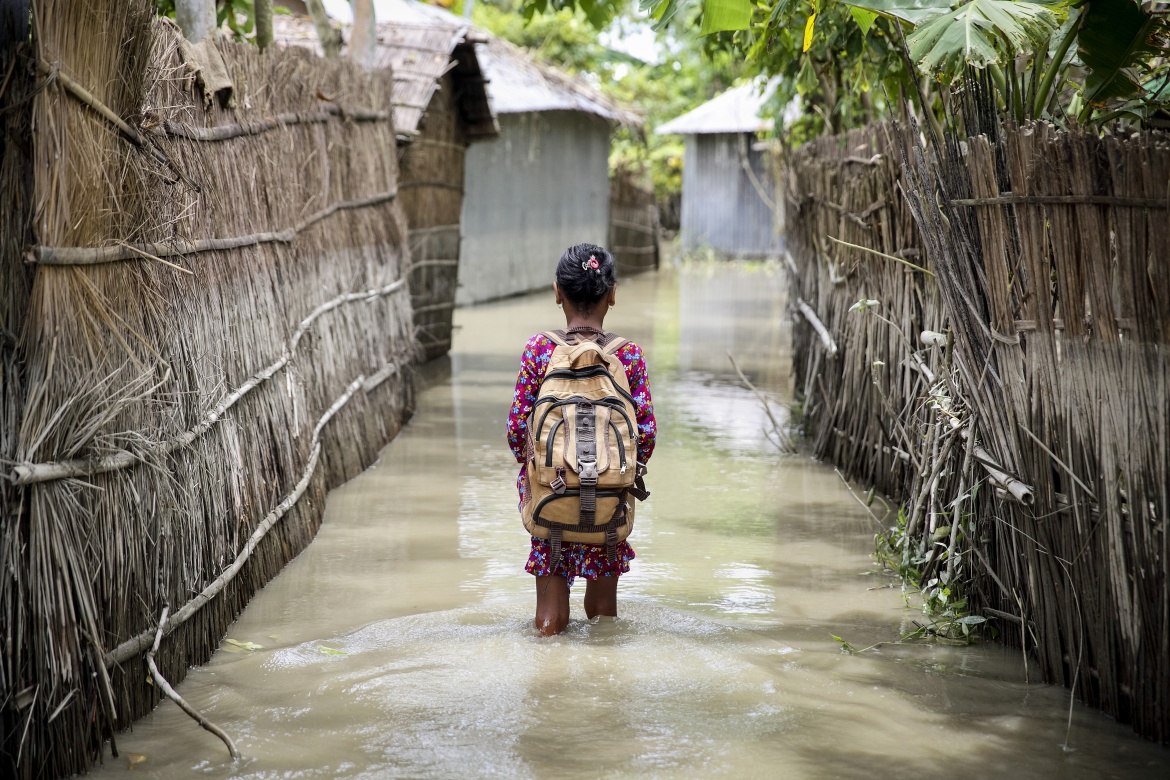As climate stressors put a strain on education, the time has come to increase the political will and galvanize action to make all education systems climate-smart. COP28 can help with that.

A child wades through water on her way to school in Kurigram district, northern Bangladesh, during floods in August 2016.
Credit: UNICEF/UN0286416/Akash
“We are not the inheritors of a broken planet; we are the builders of a new world, a world where humanity and nature coexist in harmony.”
These are the words of GPE youth leader Valentine Mugun Chepkoech from Kenya at our recent Futures Festival to mark World Children’s Day.
They’re a powerful reminder that we must forge a careful path to Conference of Parties to the Climate Change Convention (COP28) and beyond that account for how children and young people are the most impacted by the climate crisis, the least responsible in creating it and yet the most motivated to solve it.
In the last 20 years, the average number of disasters caused by natural hazards has increased from 200 to over 400 a year–an increase predicted to escalate by another 320% in the next 20 years.
GPE partner countries are some of the most climate-vulnerable in the world, bearing the brunt of increasingly frequent climate emergencies. As education comes under repeated strain due to climate stressors, ministries of education have called on the partnership to mobilize the support needed to confront climate change.
To truly galvanize the level of action required to make all education systems climate-smart and confront the intensifying learning crisis, political will and commitment must dramatically increase. Will this year’s COP deliver?
Read full article at https://www.globalpartnership.org/blog/will-cop28-deliver-education

